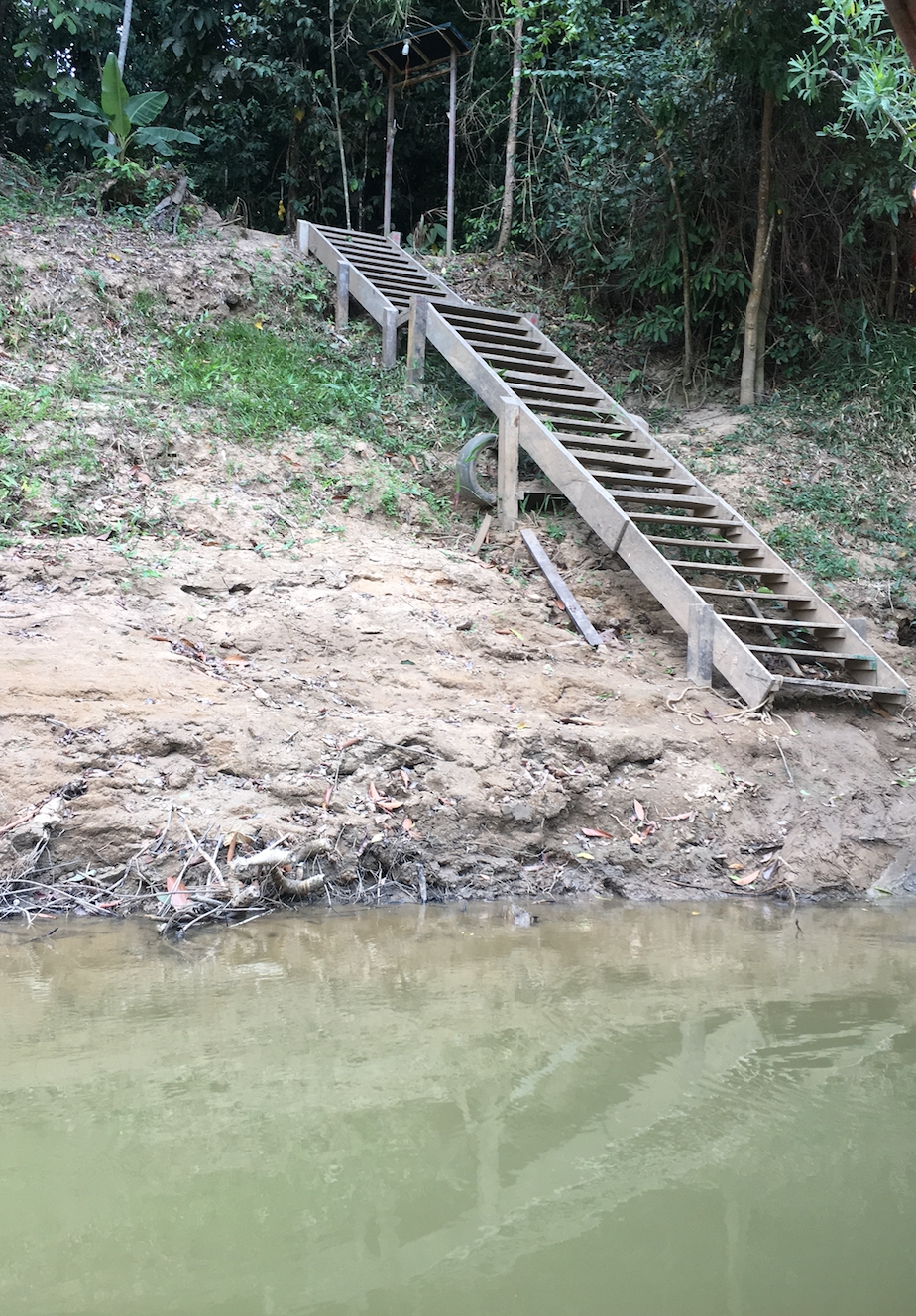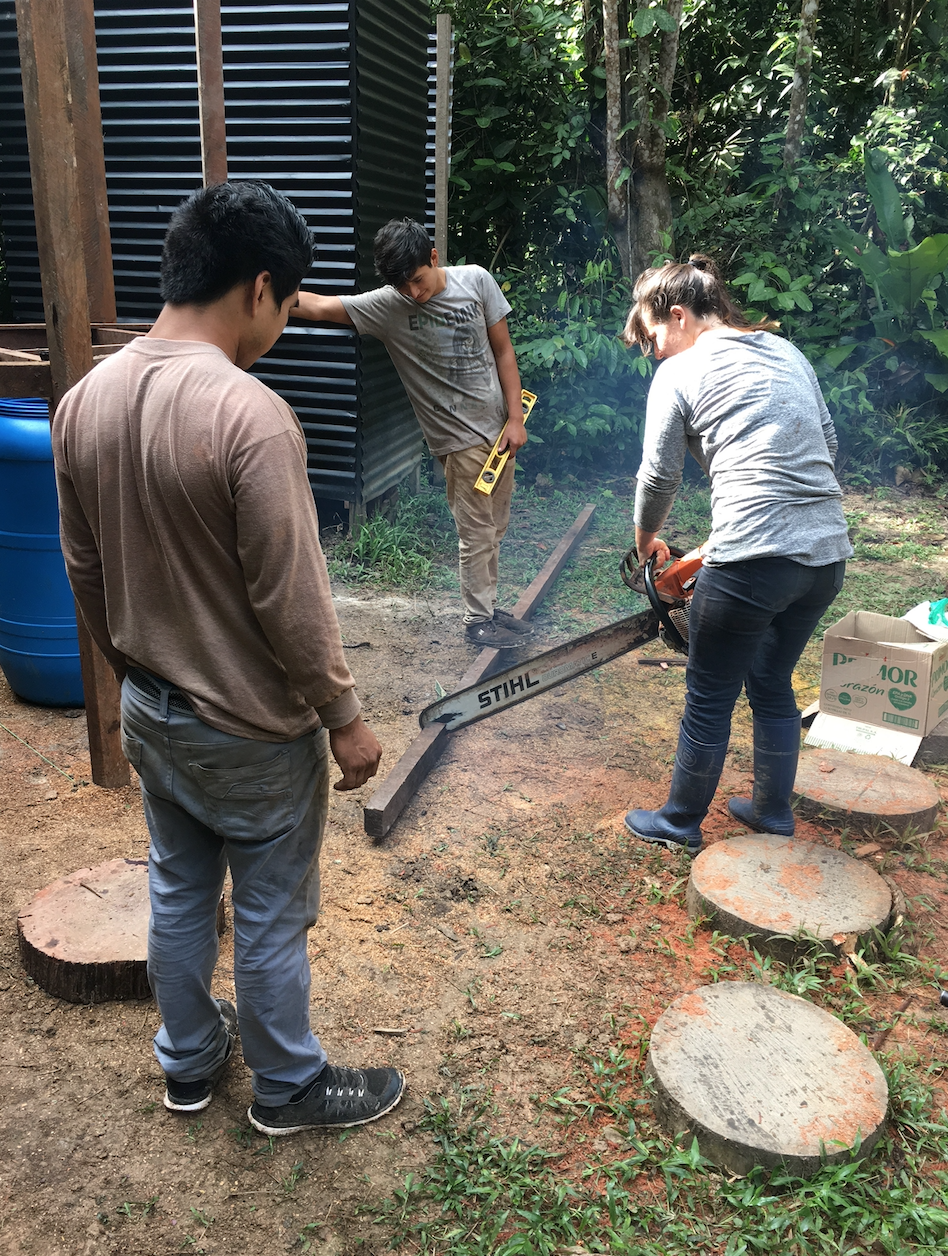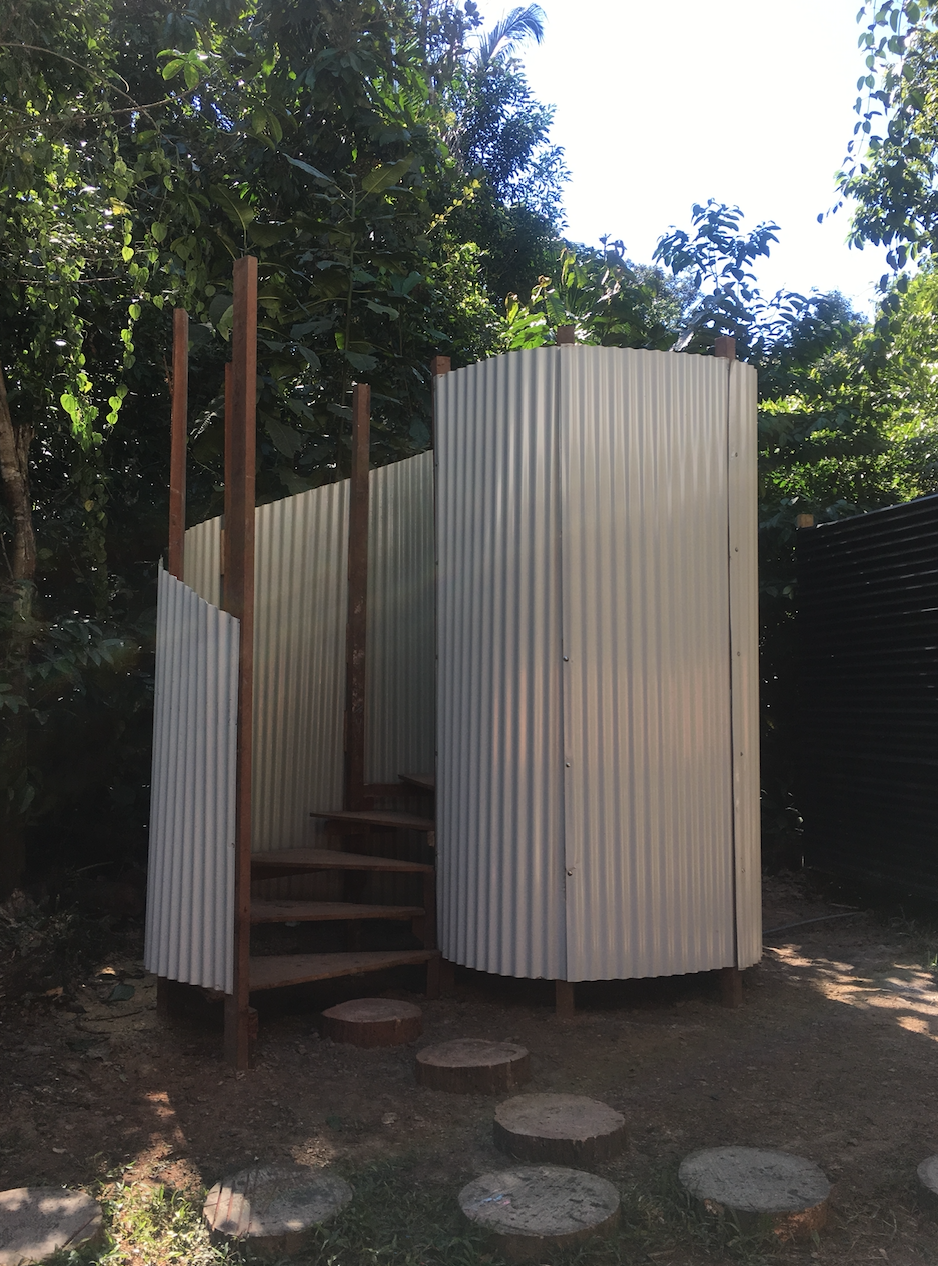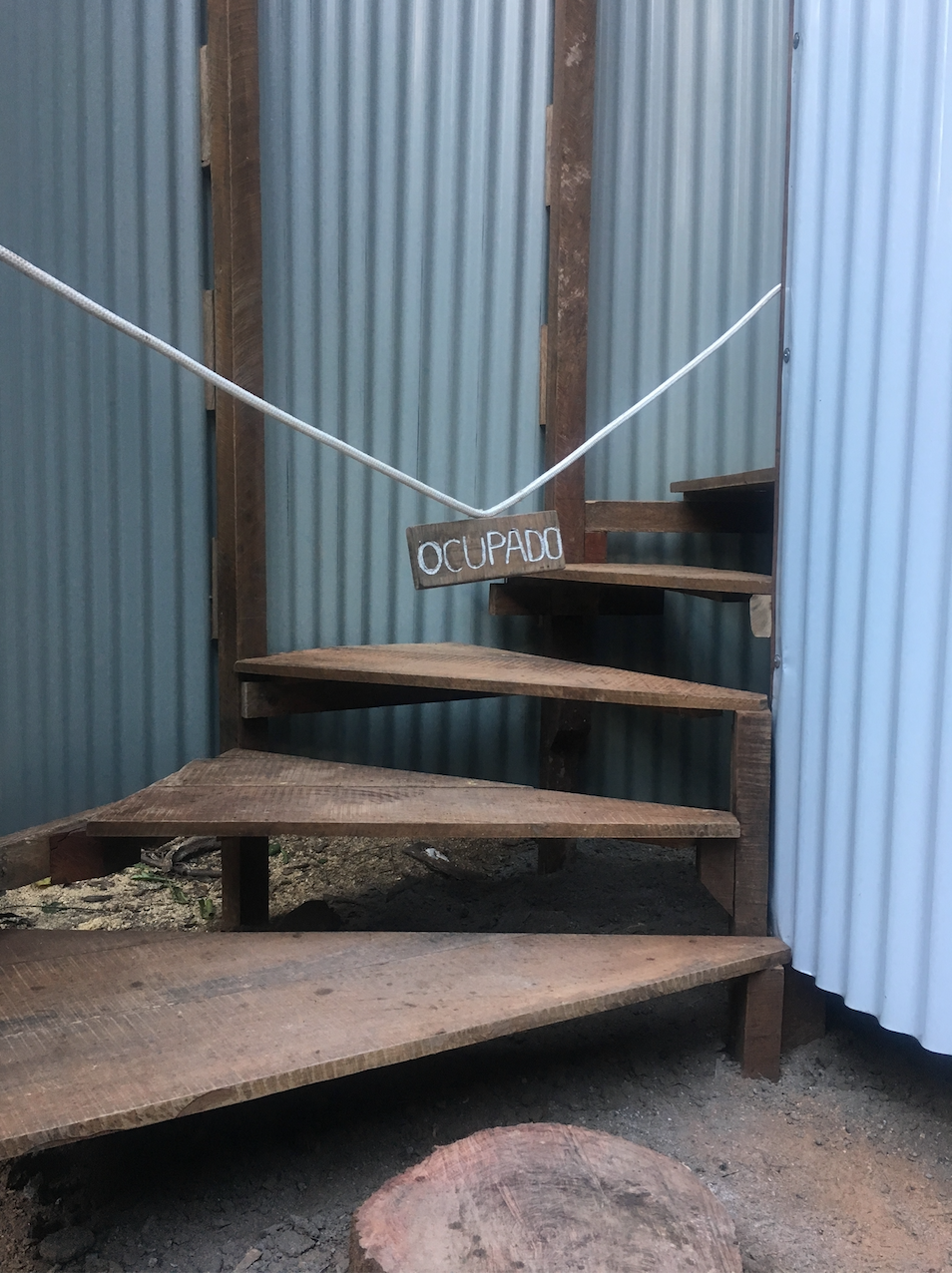How does one construct a composting toilet in the jungle? With a heavy dose of tenacity, a killer design and two badass chicks who aren’t afraid to take both construction and power tools into their own hands. Now, one might think that the humidity, the brick-heavy, clay-like soil, burning sun and incessant flies and other biting bugs would be the biggest challenges to face in a tropical rainforest composting construction project. Oh, if only it were so simple. In actual fact, the real challenge, for almost every brave soul who decides to build a composting toilet, is indubitably going to be breaking the negative stereotype that accompanies composting systems. And, true to form, trumping all other difficulties, being able to cut through the “bad rep” that these systems have unfairly acquired, was by far the biggest hurdle in my effort to build a composting toilet for the small camp at LPAC. In an attempt to help alleviate the over-taxed septic system that was on the point of collapse, I realized that the mission wasn’t so much to construct a feat of engineering in the jungle, but rather to create a composting toilet so beautiful and chic as to dispel all negativity; in fact, to transcend all expectations and allay any fears in order to quiet the naysayers’ annoying refrains of; “it’ll be gross!”, “it’ll stink!”, “those things are so messy!”; the all too familiar, negative go-to complaints from those who have never seen, or used, a properly-constructed, properly-maintained, composting toilet.
But, back to the jungle for a moment – let’s talk logistics. LPAC is situated deeply in the Peruvian Amazon, a jungle setting so remote that it takes 2-hours by 4-wheeler, crawling over gouged dirt roads to get to the small port town of Lucerna where you load onto a shallow wooden boat not much wider than a standard canoe and moor through the brown water of the Las Piedras River to arrive at ta handmade wooden staircase, suspended down a steep embankment. The primitive staircase is reach by straddling the river, one foot on the bow of the boat, the other on the stair. Small prayers pass through your head as you balance your 20-pound pack on your back and make the jump to terra firma. Next is the assent up 30 wood plank treads to another dirt path riddled with muddy reservoirs deep enough to suck the shoe straight off your foot should you be so unwise as to wear anything other than the tall rubber boots sold by the peddlers in the market all the way back in Puerto Maldonado.
And on top of carrying your own personal effects, you are now part of a human “fireman chain”, hauling up dozens of supplies. Boxes of vegetables, crates of cooking oil, sacks stuffed full of bed sheets and mosquito nets, flats of toilet paper, soap and massive propane tanks to fuel the camp for merely a couple of weeks. Basically, if you want a supply or material object and you can’t hoist it up these stairs via foot, via boat, via four-wheeler, via the streets of Puerto, it ain’t coming to the jungle. Building and construction here takes on a whole new level of difficulty, material scarcity and logistical issues of unprecedented proportions. Given said description I won’t detail how we managed to get enough wood, corrugated aluminum siding, (calamina), three 40-gallan polypropylene containers, pipes, fasteners, mesh and tubing into LPAC for “the best composting toilet ever” project, but suffice it to say, it took grit and sheer luck to get it all there*.
This is how you get supplies in to the jungle
*as an aside, we did in fact lose our 3-meter long exhaust pipe somewhere on the road to Lucerna never to be seen again, but likely ended up in the hands of one of the various logging truck drivers whose flatbed trucks can be seen hauling out gigantic, hardwood trees from this region of the Amazon; one tragically-hewn segment at a time.
Fast forward to the construction site and you can imagine the hurdles that had to be overcome - the unforgiving climate, oppressive humidity, heat and bugs to name but a few. And to that point, I want to take a moment to talk about the flies...
The Amazonian blackflies are a special kind of pest. It’s astounding how irritating these miniscule things are in the general sense, but imagine for a moment, attempting to make a precise cut on a piece of wood, or trying to hold still long enough to read a measurement on your scale, or gluing together tiny parts of your architectural model - both hands ostensibly paralyzed in their task and unable to swat away - the dozens of blackflies that land on your ankles, neck, face, ears, eyes, even your eyelashes – anything you were so unfortunate as to have left exposed. It’s enough to drive you to utter madness. And the fun doesn’t stop there. The welts and pocks that would appear on your body one, two, three days later as signs of their tiny feasts on your flesh, would accumulate to form constellations of angry red sores all over your skin; made so much more visible against a Western’s lily-white complexion. But, they are battle wounds - worn like a perfunctory uniform here in jungle.
But, back to the work at hand.
Being in the jungle, suffice it to say, we had but a smattering of rusty tools and old-school measuring devices to work with to create the “best composting toilet ever”. A hammer whose head was so precariously loose it was expected to fly off “tomahawk style” mid-swing at any moment, a sawblade for a straight-edge, discarded bent nails as post markers, blackboard chalk that we’d rub onto laundry line to act as a snap line, and bar none, the single-most important tool in any Peruvian’s toolbox; the ever-faithful, multi-functional, indispensable, machete. “Making due with what you’ve got” is an understatement in the jungle. This felt more like an episode of MacGyver than a legitimate construction project. But, exciting it certainly was.
The plan in action
Ramming earth by hand with bamboo
As sweaty as if you stood in the shower!
4 meters high and heavier than concrete, these verticals were killer to install
Mel...such a badass!
Treads
Nearly there...
My drawings – the plans, elevation, sections and details – were themselves nostalgic throwbacks. I haven’t hand drafted in years and this was sans Mayline, angles or trace; the “Holy Trinity” to most draftsmen. Here, curves were drawn via plastic lids, radii measured for accuracy with stretched nylon line and would, I’m certain, have made my drafting professor grit his teeth in disapproval. My composting toilet design required a French curve, but lacking the tool to create it, I had to mathematically figure calculations I haven’t had to wrestle with in years. AutoCAD had made me soft!
But, after hours of laboring over geometry and obtuse angles, drafted on the most ephemeral piece of paper, I had it…the master plans for the best composting toilet ever (T.B.C.T.E)! These single scraps of paper would weather the brutal conditions of the jungle; sogged from daily exposure to humidity, they were stained to the point of transparency. They were folded, rolled, crumpled and tucked into the pockets of the jeans of the workers and finally traced in reverse when we had to relocate and mirror the design to fit a different building site. But these drawings, these visions for T.B.C.T.E suffered and survived!
My design, the plan, THE final word in any architect’s mind was put through the wringer, no question. However, it served its duty because at the end of 2 weeks labor - hot, sweaty labor – I stood before what I can only describe as the most humbling, yet beautiful structure I’ve designed and built.
What could go wrong?
The guys helping to attach the funnel
Funnels have multi-functions indeed!
So, in conclusion, did we complete the mission? Did we create T.B.C.T.E? Indeed, I think so. Exceeding expectations, this composting toilet is truly unique, fully functional and if I can be so bold to say, downright pretty.
Ta da!
Exhaust pipe
Seed pods as finials
Occupied
Free
And let it be known, to all the composting toilet opposition, the naysayers and poopoo’ers, for all those architects, designers and contractors in much more comfortable, favorable conditions than the Amazon jungle in which to build, and most of all, to all those so quick to say “composting toilets are gross”…I would like to say, in the most eloquent way that I can in a blog…B.S.
Once and only once will this shot ever happen!





























